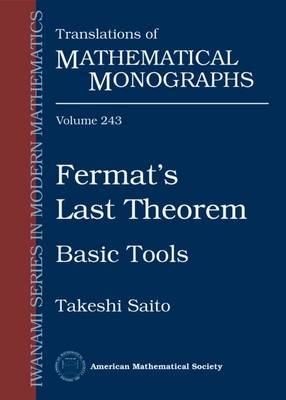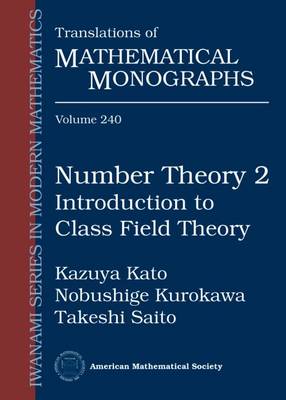Translations of Mathematical Monographs
3 total works
This 2-volume set (Fermat's Last Theorem: Basic Tools and Fermat's Last Theorem: The Proof) presents in full detail the proof of Fermat's Last Theorem given by Wiles and Taylor. With these two books, the reader will be able to see the whole picture of the proof to appreciate one of the deepest achievements in the history of mathematics.
Crucial arguments, including the so-called 3-5 trick, R=T theorem, etc., are explained in depth. The proof relies on basic background materials in number theory and arithmetic geometry, such as elliptic curves, modular forms, Galois representations, deformation rings, modular curves over the integer rings, Galois cohomology, etc. The first four topics are crucial for the proof of Fermat's Last Theorem; they are also very important as tools in studying various other problems in modern algebraic number theory. In order to facilitate understanding the intricate proof, an outline of the whole argument is described in the first preliminary chapter of the first volume.
Crucial arguments, including the so-called 3-5 trick, R=T theorem, etc., are explained in depth. The proof relies on basic background materials in number theory and arithmetic geometry, such as elliptic curves, modular forms, Galois representations, deformation rings, modular curves over the integer rings, Galois cohomology, etc. The first four topics are crucial for the proof of Fermat's Last Theorem; they are also very important as tools in studying various other problems in modern algebraic number theory. In order to facilitate understanding the intricate proof, an outline of the whole argument is described in the first preliminary chapter of the first volume.
This is the second volume of the book on the proof of Fermat's Last Theorem by Wiles and Taylor (the first volume is published in the same series; see MMONO/243). Here the detail of the proof announced in the first volume is fully exposed. The book also includes basic materials and constructions in number theory and arithmetic geometry that are used in the proof.
In the first volume the modularity lifting theorem on Galois representations has been reduced to properties of the deformation rings and the Hecke modules. The Hecke modules and the Selmer groups used to study deformation rings are constructed, and the required properties are established to complete the proof.
The reader can learn basics on the integral models of modular curves and their reductions modulo $p$ that lay the foundation of the construction of the Galois representations associated with modular forms. More background materials, including Galois cohomology, curves over integer rings, the Neron models of their Jacobians, etc., are also explained in the text and in the appendices.
In the first volume the modularity lifting theorem on Galois representations has been reduced to properties of the deformation rings and the Hecke modules. The Hecke modules and the Selmer groups used to study deformation rings are constructed, and the required properties are established to complete the proof.
The reader can learn basics on the integral models of modular curves and their reductions modulo $p$ that lay the foundation of the construction of the Galois representations associated with modular forms. More background materials, including Galois cohomology, curves over integer rings, the Neron models of their Jacobians, etc., are also explained in the text and in the appendices.
This book, the second of three related volumes on number theory, is the English translation of the original Japanese book. Here, the idea of class field theory, a highlight in algebraic number theory, is first described with many concrete examples. A detailed account of proofs is thoroughly exposited in the final chapter. The authors also explain the local-global method in number theory, including the use of ideles and adeles. Basic properties of zeta and $L$-functions are established and used to prove the prime number theorem and the Dirichlet theorem on prime numbers in arithmetic progressions. With this book, the reader can enjoy the beauty of numbers and obtain fundamental knowledge of modern number theory. The translation of the first volume was published as Number Theory 1: Fermat's Dream, Translations of Mathematical Monographs (Iwanami Series in Modern Mathematics), vol. 186, American Mathematical Society, 2000.


